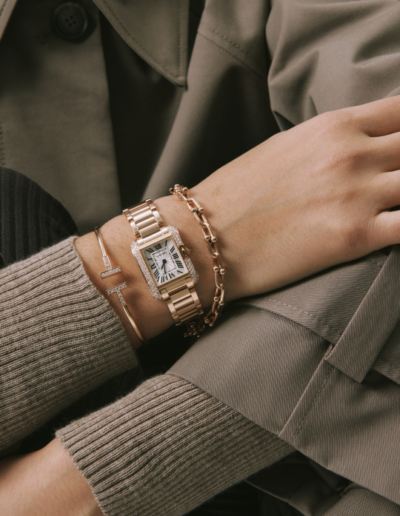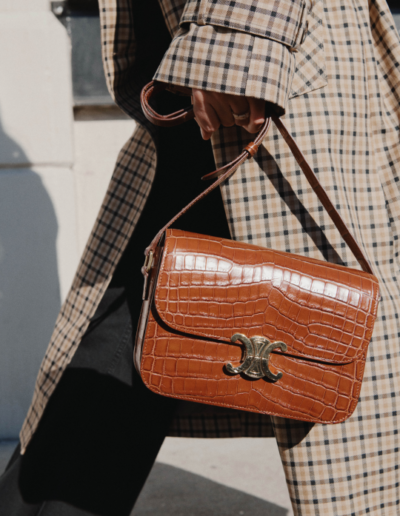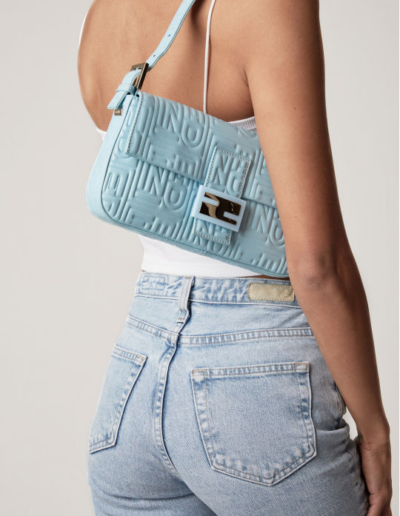KNOWLEDGE
Chanel 101:
A History, Part II
By Koyaana R. July 29, 2020
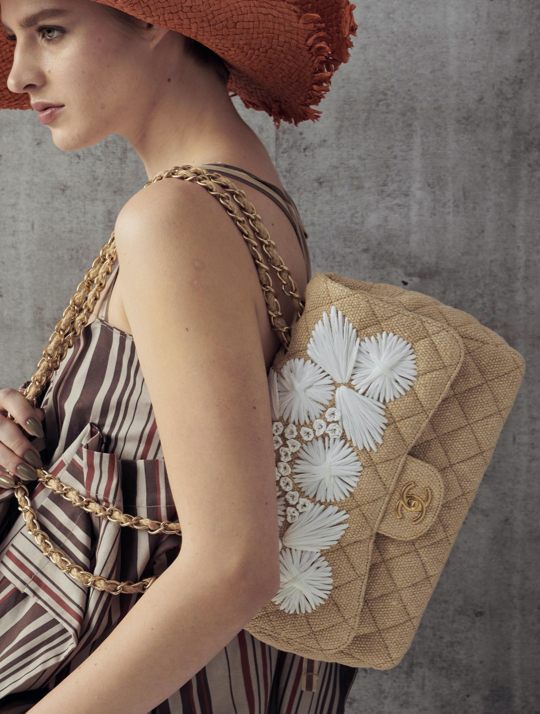
Coco Chanel, the founder of her eponymous fashion
house, was known for her wit and nontraditional viewpoint on fashion. Her ingenuity catapulted her to fame in a way that was unheard of for women of her time. It was Coco’s out-of-the-box thinking and knack for innovation that inspired her late successor, Karl Lagerfeld, to execute her vision for Chanel…
After decades of work at Chanel, Karl passed in February 2019, but not before breathing much-needed new life into the brand. With the current direction of Chanel remaining unknown, come with us and delve into the years that shaped the house beyond the years of its founder.
The Staying Power Of Chanel
By 1919, Coco’s fashion house had become so successful that she invested her profits in purchasing 31 Rue Cambon, just steps away from her original shop on the same street. The building went through an extensive renovation and, once completed, she opened her doors to the public and set the bar for what fashion boutiques should be.
1922 would be the year that Chanel expanded its repertoire of products to include fragrances. Coco was introduced to Ernest Beaux who worked with her to create a new scent that combined two classes of fragrance into one. During the 1920s, it was common for lower class women to wear sensual animal musks and for wealthier women to wear the essence of single flowers. Chanel managed to combine both elements with perfectly balanced notes, creating the legendary Chanel No. 5 Eau de Parfum. At the time, Parfums Chanel was a separate entity from her fashion ventures and, interestingly, was owned by the Wertheimer Brothers of the Bourjois perfume house. Coco simply licensed her name to the product for a 10% stake in the company. Initially, the scent was sold exclusively to certain clients of Chanel, but the brothers took care of production and distribution of the scent, leading to an uptick in sales and making the products available to the masses. Coco, who was not happy with her share in the venture, began to claim that the current product was being made with inferior ingredients to save on production costs. This turned out to be inaccurate, but for the next several decades, she would fight to own Parfums Chanel. While it never came to the terms that she demanded, a new contract was negotiated that she was ultimately unable to turn down.
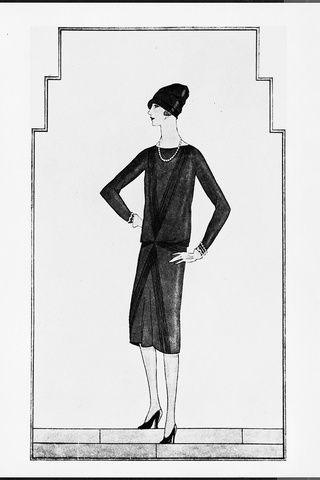
Courtesy of Vogue
It was in October of 1926 that Coco would once again turn the fashion industry on its head. Vogue published a drawing of a sleek long sleeved tailored dress made of black Crepe de Chine, starkly contrasted with a single strand of pearls. This dress was nicknamed, “Chanel’s Ford” a term that came to mean that it was for every woman. This was the birth of what would come to be known as the ubiquitous “Little Black Dress.”
The Uncertain Future Of Chanel
Over the next few years, Coco took on a few side projects for film and participated in a few collaborations, but eventually returned her focus mainly on her own couture designs. Soon, however, in 1936 and the following decade would prove to be the beginning of a tumultuous time for the house of Chanel. The once formidable couturier, with its extensive workforce, was feeling the tension and pressure of the political unrest amongst many of the European nations in the build-up prior to the outbreak of World War II. The maison was forced to let go three-quarters of its laborers and in 1939 the German occupation of France stifled much, if not all, of the economy, forcing Coco to close all of her stores. During the occupation, Coco began her relationship with a German representative. When the war finally came to a close in 1945, she then moved to Switzerland to avoid scrutiny stemming from her association with the Germans. It would be nine years until Coco moved back to Paris, ready to re-establish her place in the fashion industry, which was now dominated by the likes of Christian Dior and Cristobal Balenciaga. Fashion at the time still seemed too restrictive and unnecessarily impractical, so she set out to do what she did best: create elegant and comfortable clothing for women.
It was then an unlikely hero that came to her rescue: Pierre Wertheimer. The same Wertheimer whom Coco claimed swindled her out of her perfume line. It was at this time that Wertheimer renegotiated their original 1924 to favor Coco, including profits from during the war, and with the promise that, moving forward, he would fund all of her expenses for the rest of her life. Her first collection after her sabbatical was met with skepticism by the public that could be attributed to her ties during the war. However, British and American fashion editors raved about the collection, claiming it was a breakthrough for the designer.
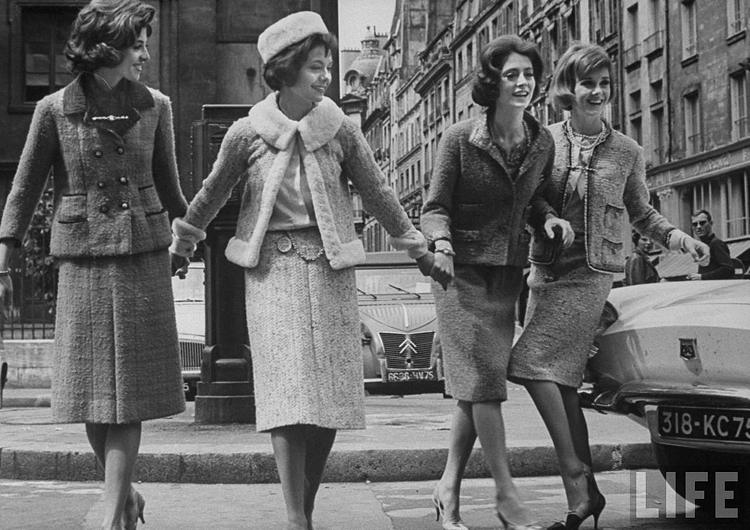
Courtesy of Vinvoy
Not long after the success of the tweed suit came the invention that would not only change the house of Chanel, but the entire fashion world. In February of 1955, Chanel debuted the 2.55, a shoulder-carried handbag. At the time, handbags were carried by hand or tucked under the arm, depending on the preference and need of the wearer. This new bag had an adjustable chain that allowed for the versatility of length as well as a flap and lock closure. The aspects of the 2.55 were inspired by various parts of Coco’s life. The quilting came from the jackets of stablehands, the red interior and chain are reminiscent of her time at Aubazine, and the Mademoiselle lock was a reference to the fact that she never married. The 2.55 evolved to other various handbags and eventually became one of the most recognizable accessories in the world, and what the Chanel name is now synonymous with.
It was then an unlikely hero that came to her rescue: Pierre Wertheimer. The same Wertheimer whom Coco claimed swindled her out of her perfume line. It was at this time that Wertheimer renegotiated their original 1924 to favor Coco, including profits from during the war, and with the promise that, moving forward, he would fund all of her expenses for the rest of her life. Her first collection after her sabbatical was met with skepticism by the public that could be attributed to her ties during the war. However, British and American fashion editors raved about the collection, claiming it was a breakthrough for the designer.
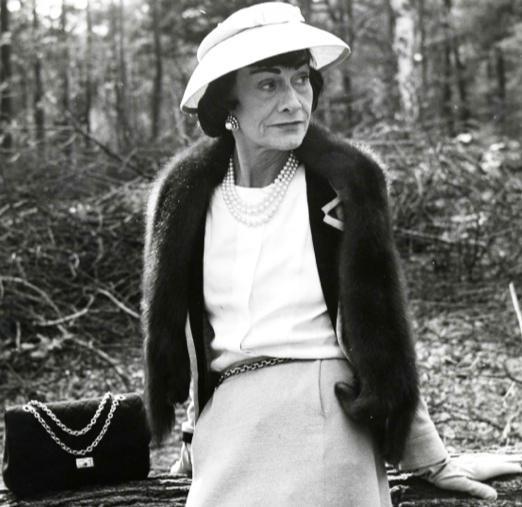
Courtesy of Vintage Fashion Guide
At this point in the company’s history, Coco was in her seventies; she remained industrious and continued to design and construct fashion that women flocked toward. However, it was in her eighties that her subordinates recollected that she began to run her house in an oppressive fashion, having outbursts and going on tangents that could only be described as tyrannical. In spite of this, the respect she had earned over the years allowed for her continued success until her passing in January of 1971 due to a heart attack.
Emergence Of A New Era For Chanel
Following Coco’s passing and until the appointment of Karl Lagerfeld, the brand lost its appeal and fell out of focus in the fashion world due to creative directors who may not have been up to task for a reinvention. It is not surprising that the house of Chanel needed another creative director as soon as possible; someone who would continue the legacy but remain on brand. Karl Lagerfeld had been designing for Chloe in the 1970s and was well known by Chanel, but needed to finish out his contract with the competing couture house. It wouldn’t be until the 1980s, when Chanel was semi-defunct and out of favor with the masses, that Lagerfeld would take the reigns.
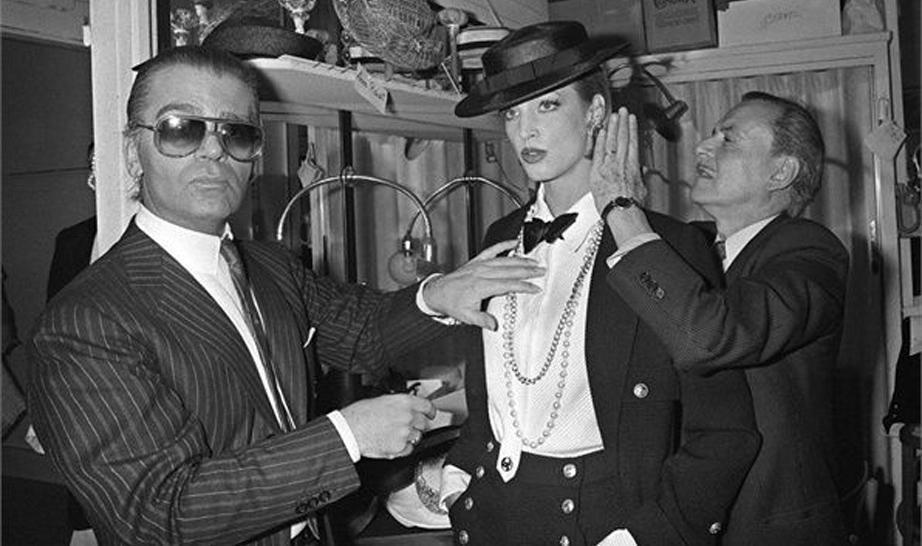
Courtesy of Shrimpton Couturea
Karl’s first collection as creative director turned the house’s reputation around. His drive and need for success brought about a rebirth of the brand. His elaborate sets were nothing new, as he was famous for them during his time at Chloe. For Chanel, this was entirely different and opposite from the intimate shows that editors and the elite were accustomed to. However, his daring clothing was a breath of fresh air, but he still managed to keep the silhouettes clean and continued to use the classic materials that Chanel was known for.
Early in his career at Chanel, Karl reintroduced the interlocking C motif, making it an integral part of the house’s branding. It became instantly recognizable, especially when paired with the brand’s famous quilted flap bag. Thus, the Chanel Classic Flap was born and has not made any indication it will be going anywhere any time soon. The demand has steadily increased over the decades allowing for a price increase as often as twice a year, which is steep in comparison to most price increases of similar bags by other brands.
It didn’t seem that Karl wanted to reinvent the brand completely, but did believe he could bring it out of its dark period. He has been quoted saying, “Everybody said, ‘Don’t touch it, it’s dead, it will never come back.’ But by then I thought it was a challenge.” In 1983 he debuted his first collection for the brand, and according to the New York Times, “His job was to update the Chanel look but not change its character. To the surprise of many, this is exactly what he accomplished. Chanel remains recognizably Chanel.”
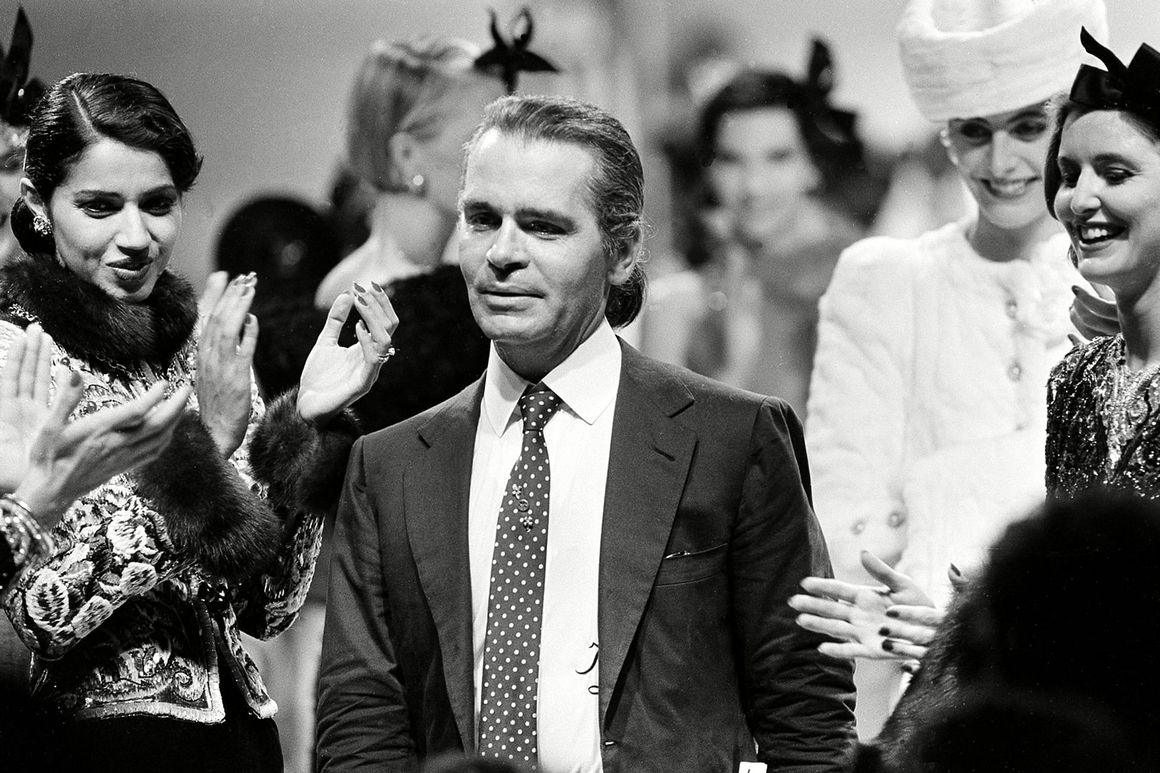
Courtesy of CR Fashion Book
Karl became paramount to the brand’s success and reemergence into the luxury market. The details that each collection encompassed were nothing if not extraordinary. What is most surprising is that he was not only able to design for Chanel, but also for Fendi and his own namesake label at the same time. From here on out, Karl continuously designed 14 collections a year for the couture house. It was his ability to push boundaries, question norms, and shock the masses that hoisted him into the spotlight. He has been known for his shock value when it comes to his views and lifestyle practices, but it is also these things that made him an enigmatic powerhouse. His personal uniform of a tailored black suit, sunglasses, fingerless gloves, and low ponytail made him easily recognizable.
Karl had a penchant for theming his collections around luxury destinations around the world. From Dubai to Salzburg, each collection had a slight flair based on each location and each had a small token: a beautifully crafted minaudiere. Over the years, these would become collector’s items, garnering the attention of the fashion-forward and die-hard collectors.
Early in his career at Chanel, Karl reintroduced the interlocking C motif, making it an integral part of the house’s branding. It became instantly recognizable, especially when paired with the brand’s famous quilted flap bag. Thus, the Chanel Classic Flap was born and has not made any indication it will be going anywhere any time soon. The demand has steadily increased over the decades allowing for a price increase as often as twice a year, which is steep in comparison to most price increases of similar bags by other brands.
It didn’t seem that Karl wanted to reinvent the brand completely, but did believe he could bring it out of its dark period. He has been quoted saying, “Everybody said, ‘Don’t touch it, it’s dead, it will never come back.’ But by then I thought it was a challenge.” In 1983 he debuted his first collection for the brand, and according to the New York Times, “His job was to update the Chanel look but not change its character. To the surprise of many, this is exactly what he accomplished. Chanel remains recognizably Chanel.”
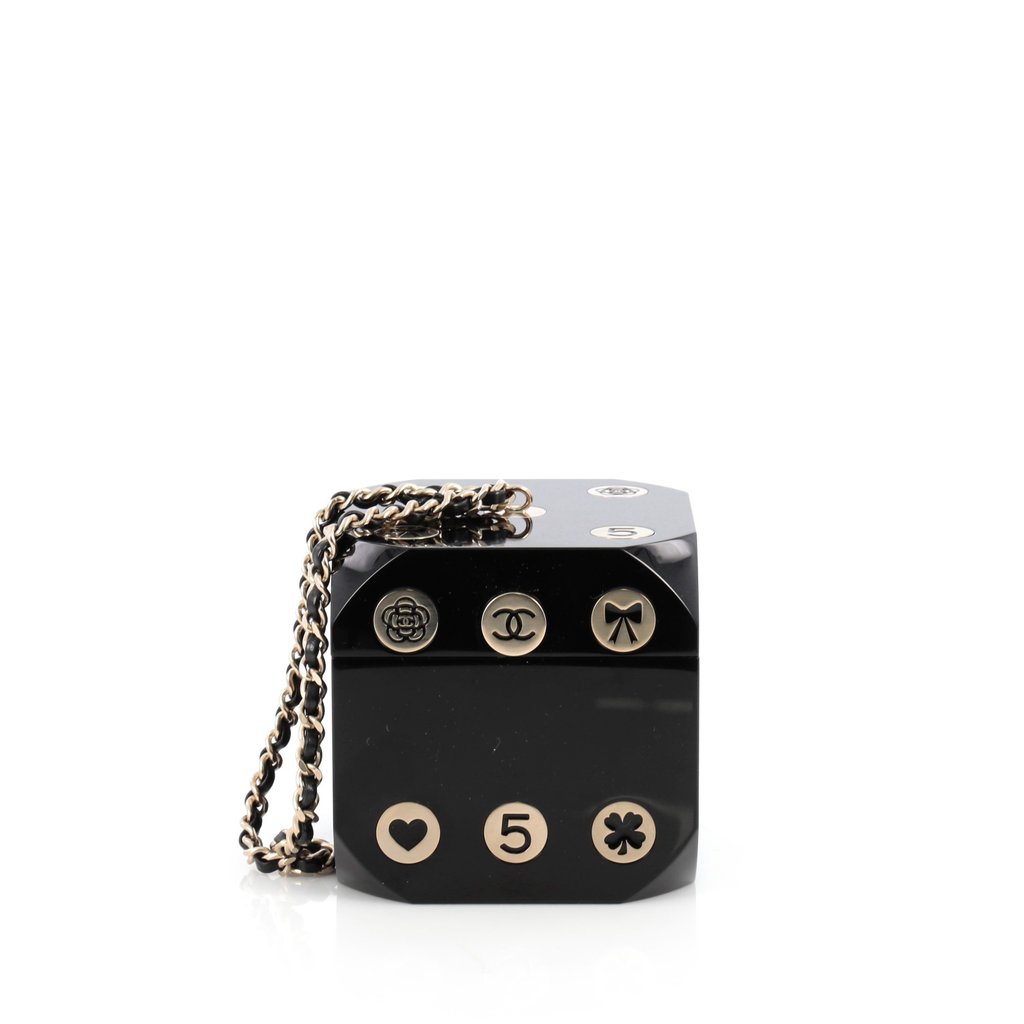
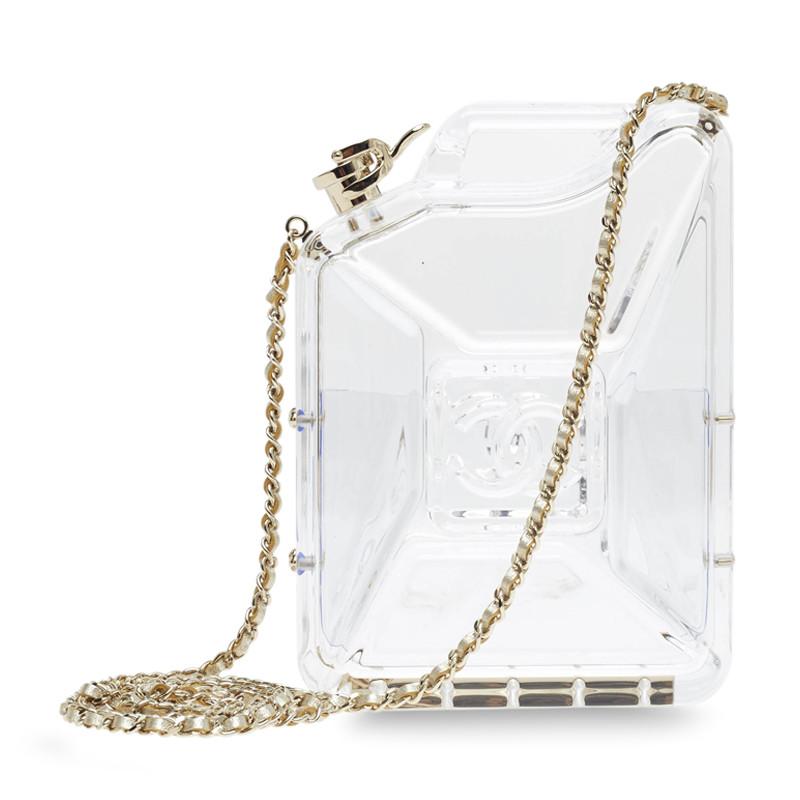
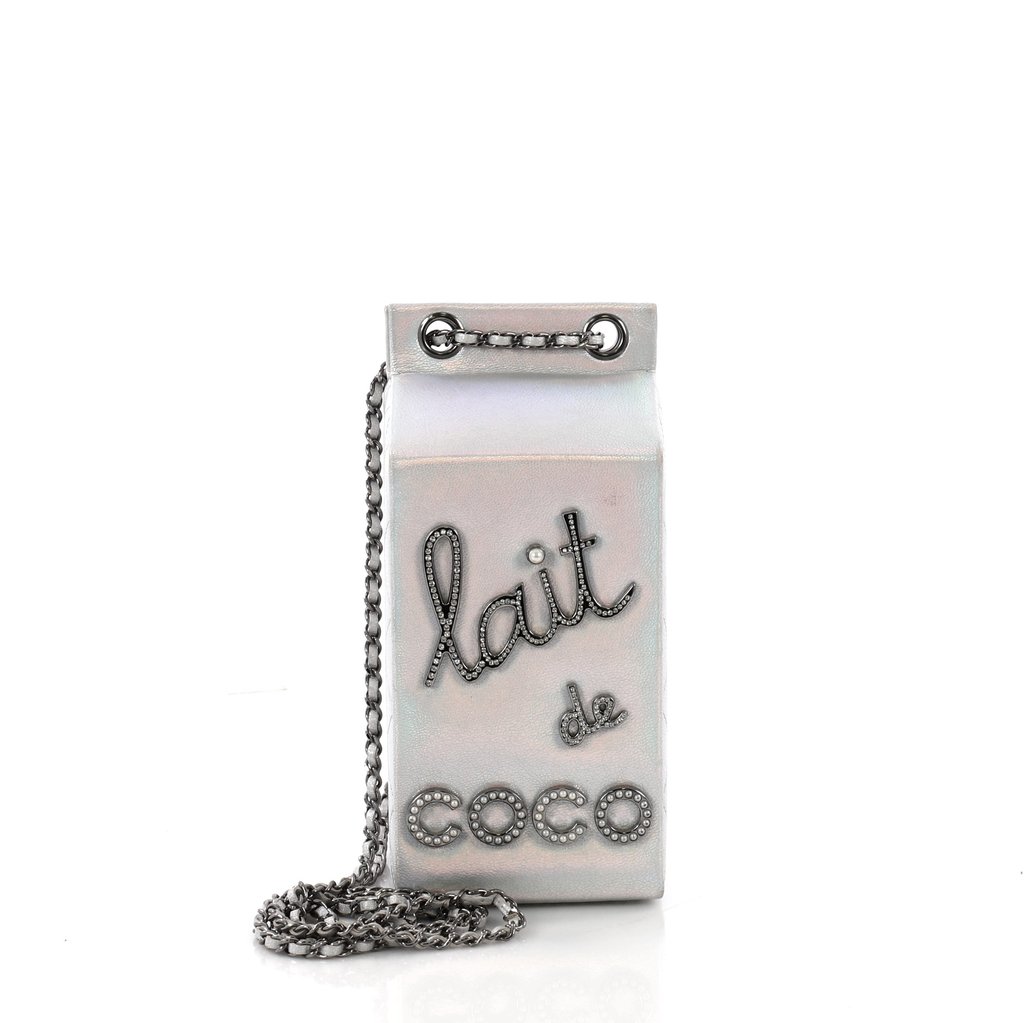
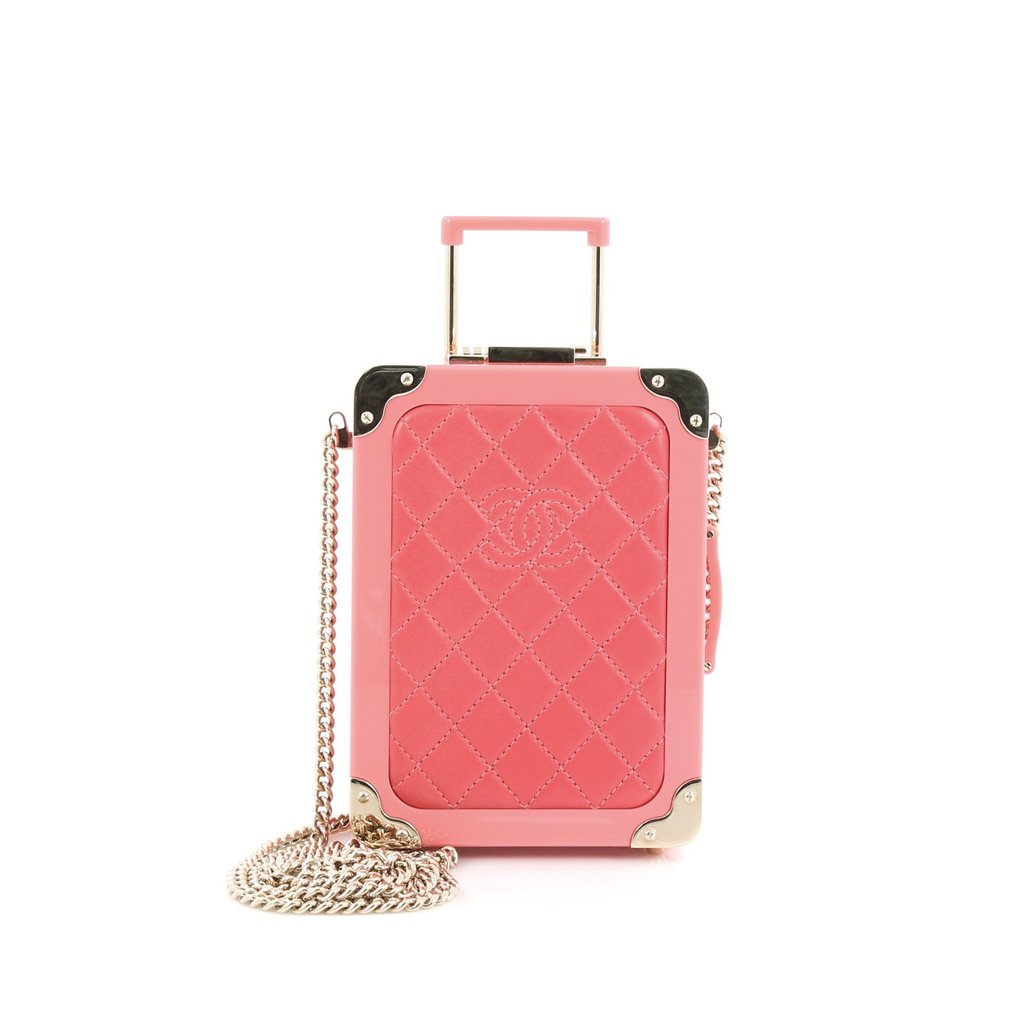
In 2005, Lagerfeld dug into Chanel’s heritage and brought about the revival of the 2.55 handbag. Dubbed the “Reissue 2.55,” it was released in February of 2005, the 50 year anniversary of the first release of Chanel’s original design. Using the same chain, red interior, and Mademoiselle lock, the Reissue became a new favorite for Chanel lovers. Available in a myriad of colors, materials, and sizes, it was an immediate success. Even today these bags remain a staple for the brand.
For decades, Karl carried the Chanel name on his shoulders, keeping it relevant with an elite sense of luxury up until his passing in February of 2019. Following the death of Chanel’s only other major creative director besides Gabrielle herself, it was not a surprise that they chose to keep it in the family. Namely, Virginie Viard, Karl’s right-hand woman. With the appointment of Virginie there is much speculation as to what direction she will take the brand. While we have to wait to see what she will unveil in her coming collection, many are confident she will do as Karl did: update the Chanel look but not change its character.
Within the history of Chanel is an inspirational story of a strong woman with ambition, who against all odds brought her vision to life, only for it to crumble upon her departure but Chanel rose from the ashes with the appointment of Karl Lagerfeld. And now, with his passing, the story comes full circle. With the brand having been run by two successful creative directors who ruled the world of luxury for decades, the industry is patiently awaiting Chanel’s next move, and hoping we will be as thrilled as we were with Coco and Karl.

